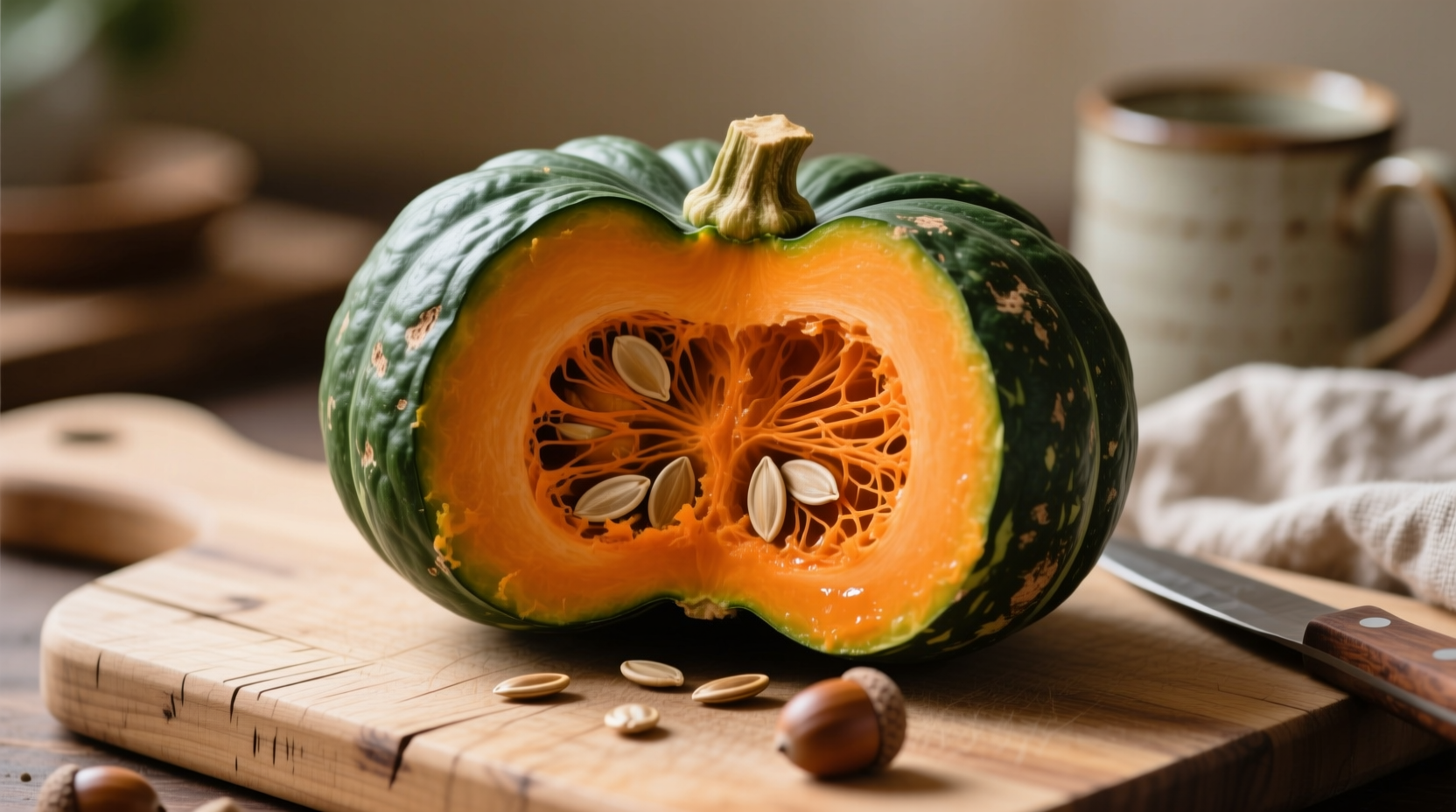Acorn squash transforms from a humble winter vegetable into a culinary star with proper preparation. This nutrient-dense squash offers earthy-sweet flavor that pairs beautifully with both savory herbs and sweet enhancers like maple syrup. Our comprehensive guide covers every step from selection to serving, ensuring perfect results whether you're roasting, baking, or air frying. Discover professional techniques that guarantee tender flesh without mushiness every time.
Selecting Your Acorn Squash
Choose squash with deep green, firm skin free of soft spots or cracks. The ideal specimen feels heavy for its size (typically 1-2 pounds) with a hard, dry stem. According to the USDA Agricultural Marketing Service, peak season runs from September through January when squash develops optimal sweetness and texture. Avoid specimens with yellowing skin, which indicates overripeness and potential stringiness.
| Selection Criteria | Good Indicators | Poor Indicators |
|---|---|---|
| Skin Appearance | Deep green with subtle orange patches | Excessive yellowing or soft spots |
| Weight | Heavy for size (1-2 lbs) | Lightweight for size |
| Stem Condition | Dry, firm stem | Moldy or missing stem |
Safe Preparation Techniques
Cutting acorn squash requires proper technique due to its tough exterior. The FDA Food Code recommends using a sharp chef's knife (8-10 inches) and stabilizing the squash by first slicing a thin portion from the stem and blossom ends to create flat surfaces. Place the squash vertically on a stable cutting board, then carefully cut from stem to base. Always cut away from your body with controlled pressure.

After halving, use a sturdy spoon to scrape out seeds and stringy pulp. For easier cutting, microwave whole squash for 2-3 minutes to soften the flesh slightly. Never skip the seeding step - the FDA warns that improperly cleaned squash can harbor bacteria in the seed cavity.
Perfect Roasting Method
Roasting delivers the most reliable results for beginners and experienced cooks alike. Preheat oven to 400°F (200°C). Place squash halves cut-side down on a parchment-lined baking sheet. Roast for 30 minutes, then flip and roast cut-side up for 10-15 minutes more. This two-stage method prevents sogginess while ensuring even cooking.
Seasoning options:
- Savory approach: Brush cut surfaces with olive oil, then sprinkle with salt, pepper, and fresh thyme
- Sweet variation: Drizzle with 1 tablespoon maple syrup and a pinch of cinnamon
- Protein boost: Top with toasted pecans or pumpkin seeds during the last 5 minutes
Alternative Cooking Methods
Baking: Fill cavity with ¼ cup water, cover with foil, and bake at 375°F for 45-60 minutes until fork-tender. This steaming method preserves moisture.
Air frying: Toss cubed squash (1-inch pieces) with 1 tablespoon oil and roast at 380°F for 15-18 minutes, shaking basket halfway through. Ideal for quick side dishes.
Steaming: Place chunks in a steamer basket over boiling water for 12-15 minutes. Preserves maximum nutrients according to Cornell University's Food Science Department, though develops less caramelization.
Determining Doneness
Test for doneness using multiple indicators:
- Visual cue: Skin appears slightly shrunken with golden-brown edges
- Texture test: Fork should slide easily through flesh with slight resistance
- Internal temperature: 200-205°F (93-96°C) at thickest point
Overcooked squash becomes watery and loses structure. The National Center for Home Food Preservation notes that properly cooked acorn squash maintains distinct fiber strands while yielding to gentle pressure.
Serving and Storage Tips
Serve immediately for best texture. Leftovers keep in airtight containers for 4-5 days in the refrigerator. Reheat in oven at 350°F for 10-15 minutes to restore texture - microwaving makes squash soggy. For meal prep, cube cooked squash and freeze for up to 3 months.
Pair roasted acorn squash with:
- Proteins: Roasted chicken, turkey, or pork tenderloin
- Grains: Wild rice pilaf or quinoa
- Greens: Massaged kale salad with apple slices
Troubleshooting Common Issues
Problem: Squash too hard to cut
Solution: Microwave whole squash for 2-3 minutes or use a mallet to gently tap the knife through tough sections
Problem: Uneven cooking
Solution: Position thicker stem end toward oven's back (usually hottest spot) and rotate pan halfway through cooking
Problem: Excess moisture
Solution: Always roast cut-side down initially and avoid covering during final cooking stage











 浙公网安备
33010002000092号
浙公网安备
33010002000092号 浙B2-20120091-4
浙B2-20120091-4